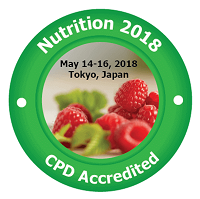LI LI
National Institute for Nutrition and Health, China.
Title: Thiamin, Riboflavin and Niacin intakes in Chinese adults in 15 provinces
Biography
Biography: LI LI
Abstract
B vitamins have been neglected in China. Most people who lack it belong to subclinical conditions. Well understanding the prevalence of B vitamins will provide guidance for nutritional policies and interventions in China. The data were used from a longitudinal survey in 2015, China health and nutrition survey (CHNS) among 18-64 year old. Dietary data of subjects on three consecutive days were recorded. The EAR cut-point method (EAR cut-point) was used to assess the prevalence of the adequacy intake of three B vitamins, thiamin, riboflavin and niacin by sex, age, areas of residence, south and north parts of China, education, and income. For male, the prevalence of inadequate intake of vitamin B1,B2 and niacin was 77.39%,85.47% and 25.60% respectively. For female, the prevalence of inadequate intake of vitamin B1, B2 and niacin was 75.84%,81.71% and 26.49%, respectively. Vitamin B1 and B2 are seriously deficient in both sex in 18-64 year old adults. Better income or better education levels of both sex have higher intake of vitamin B2 and niacin than those with lower incomes or education. The intake of vitamin B1, B2 and niacin is inadequate among 18-64 years old in China. Improved nutritional status in China is needed by well-tailored strategies and policies.

